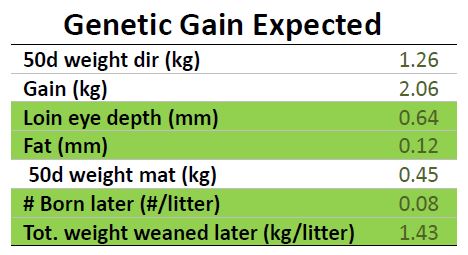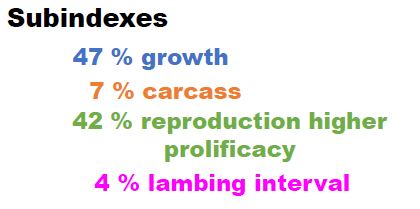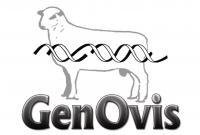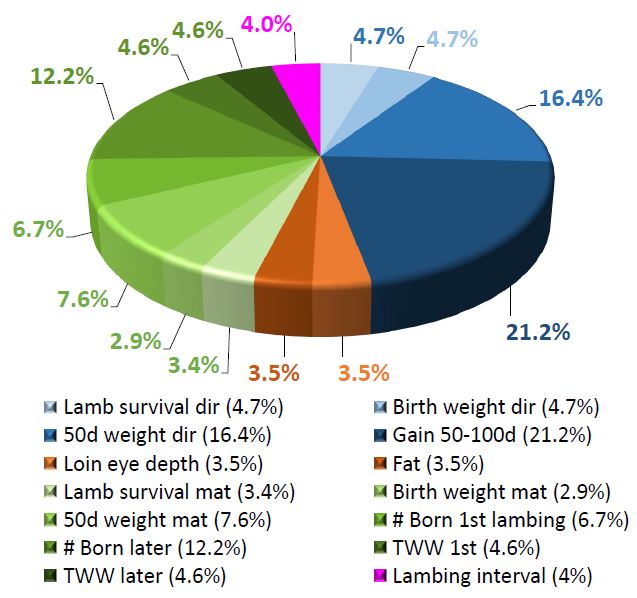USE TO
MAT-UHP index is designed to improve number of lambs born per litter, lambs’ growth rate and carcass quality.
IDEAL to select maternal breeds (as Dorset, North Country Cheviot, Polypay…)
Ultrasound measurements are required to generate this index.





Expected Genetic Gain
The expected genetic gain, tabulated for the different genetic indexes, represents the genetic progress that can be made by selecting breeding stock within the top 15% of the index.
By selecting the replacements from the top 15% of your herd on genetic index values (e.g. MAT-UHP index), you can expect to achieve the genetic progress represented in the table within one generation for growth traits and two generations for production traits. The results will be that the offspring will have the genetic potential to weigh, on average, +1.3 kg more at 50 days and +2.1 kg more at 100 days than the average lamb of the previous generation. In addition, the daughters will have the potential to produce, on average, 0.08 more lamb per lambing and weaned heavier lambs (about 1.4 kg more per litter) compared to lamb of the previous generation.
So, if a group of lambs weighed an average of 30 kg at 50 days, after selection, offspring from these animals should weigh an average of 31.3 kg. Of course, some animals will perform better and others will be worse, but on average the weights of the offspring will be close to 31.3 kg. The performance may be lower if the lambs are not raised under optimal conditions, or even better, if they have more favorable conditions.
FACTORS APPLIED TO EPDs WITHIN THE INDEX
EPD Lamb Survival dir |
4.61 |
EPD Birth Weight dir |
-2.32 |
EPD 50d Weight dir |
2.22 |
EPD Gain 50-100 days |
1.94 |
EPD Loin |
0.30 |
EPD Fat |
-0.95 |
EPD Lamb Survival mat |
5.51 |
EPD Birth Weight mat |
-1.76 |
EPD 50d Weight mat |
1.03 |
EPD #Born First Lambing |
9.13 |
EPD TWW First Lambing |
0.65 |
EPD #Born Later Lambing |
14.73 |
EPD TWW Later Lambing |
0.51 |
Lambing Interval |
-0.35 |

